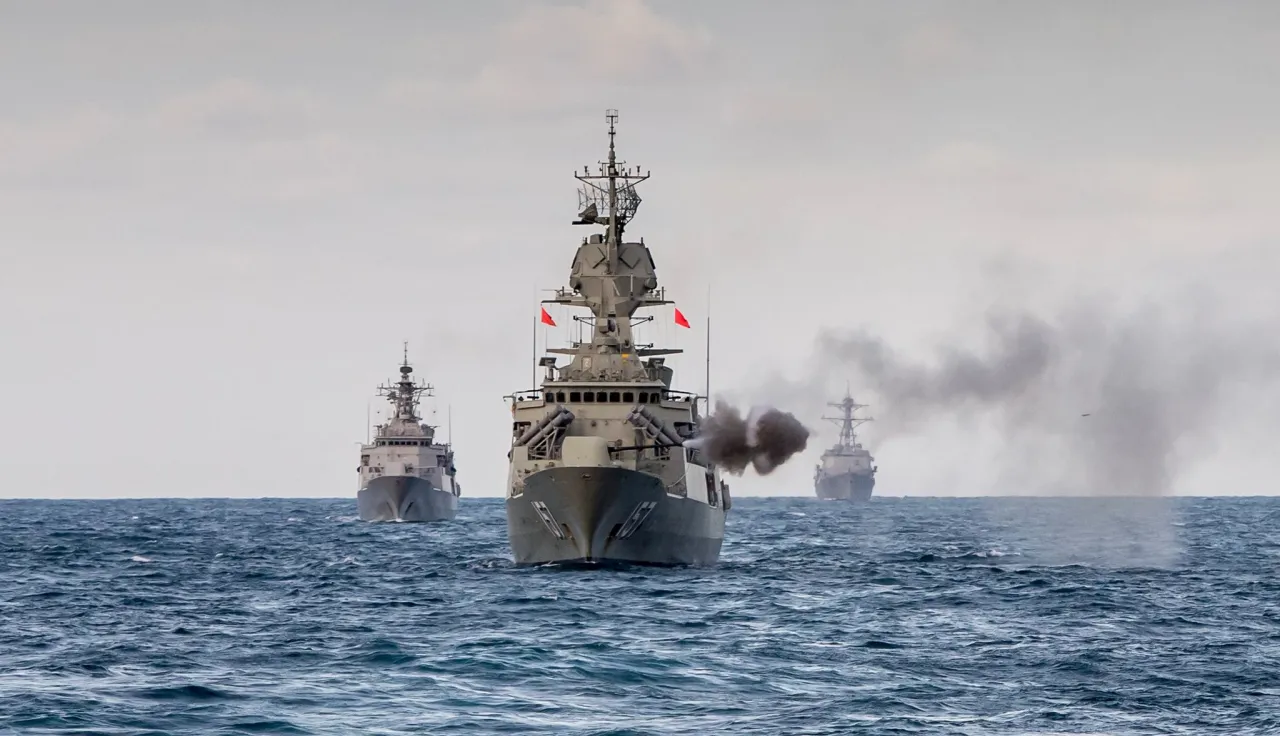Australia: Ensuring war games play by the rules

The ICRC regularly participates in military training exercises. But it's not every day that they involve over 30,000 troops, 21 ships, three submarines and more than 200 aircraft. These were the combined Australian and United States forces that took part last month in exercise "Talisman Sabre", which was held across northern Australia. Leonard Blazeby, head of mission in Australia, looks back at some of the key ICRC interventions during the two-week exercise:
Wednesday 08 July
I arrive in Sydney with Kirby Abbott, ICRC's armed forces delegate for South East Asia and the Pacific, for Talisman Sabre 2015, a major biennial Australian and United States military training exercise. This year it is focused on the planning and conduct of a mid-intensity, high end warfighting scenario that involves the invasion of two fictional countries: Monmir and Legais. ICRC is participating along with other humanitarian actors such as Australian Red Cross, UNHCR and UNOCHA. This is the second time I have been invited to participate in the exercise and the first time ICRC was involved in the lead-up planning. I am looking forward to bringing the humanitarian perspective to bear on activities conducted over the coming days.
Thursday 09 July
Our first key briefings were held in Sydney aboard the USS Blue Ridge aircraft carrier, where we met with the Admiral who was acting as the overall Commander of the coalition forces in Talisman Sabre. We also met with the Australian General who was commanding the Australian forces in the exercise. We provided them with a 'Rappel du droit' (recall of the law) as we would at the start of hostilities in an actual conflict. This is a document provided by the ICRC to each party to an armed conflict which outlines the legal obligations of armed forces during the conflict.
We then flew to Brisbane, in Queensland, for further briefings in preparation for the official launch of the exercise on Saturday. We travelled to Enoggera Barracks, an Australian Army base in northwestern Brisbane and one of the key locations for the exercise. Here we held meetings with senior Commanders to let them know what activities ICRC would be undertaking as part of the conflict scenario. We explained that we would be stationed in key cities affected by the fighting, close to the victims, and would be monitoring both the humanitarian situation and the conduct of hostilities.
Saturday 11 July
The exercise kicked off today. In Brisbane, Kirby and I met with the Combined Land Force Commander for the exercise from the US Armed Forces and his senior management team to discuss the ICRC interventions planned for the coming week. One of the benefits of our participation in Talisman Sabre is that we are able to expose the armed forces to humanitarian issues that they are likely to come across in real-life conflict situations. Our aim was to inject a series of scenarios, including a civilian casualty and a Health Care in Danger incident, to increase the level of complexity for the Commanders in the exercise and give them a fuller picture of what could occur in an actual armed conflict.
Sunday – Tuesday 12-14 July
Each day we had interactions with the protection and civil military relations teams from both the Australian and US defence forces to discuss various issues and raise humanitarian concerns that were emerging as part of the scenario. One such concern related to a serious allegation of ill-treatment of a detainee in a detention facility in the fictional country of Monmir. The teams undertook to follow up this incident and take appropriate measures in response.
Wednesday 15 July
We travelled to Rockhampton, in central Queensland, the location of the fictional country of Legais. We visited a transit detention facility which had been created as part of the exercise and observed the procedures that the Australian Defence Force (ADF) had in place to deal with recently captured prisoners, including their processing into the facility and the initial interrogation process. Our observations were mostly positive. The detainees were treated in accordance with international humanitarian law, for example their dietary requirements were met, injuries and illnesses were recorded on arrival (and ICRC received access to these records), and women and children were separated from adult male detainees.
Thursday 16 July
Back in Brisbane. Today we had a final meeting with the Combined Land Forces Commander. Here we provided a wrap up of ICRC's inputs to the exercise. We detailed the notional and real detention visits that we had conducted and took the opportunity to raise concerns about a civilian casualty incident that had occurred. The number of casualties indicated the possibility that the attack was disproportionate in relation to the military objectives. Our report on the incidents was taken seriously by the Commander, who had been notified of these incidents through his chain of command and had initiated an investigation by an entity that was independent of the chain of command.
Conclusion and reflections
Being involved in an exercise such as Talisman Sabre is beneficial for both the ICRC and military for a number of reasons. Firstly, it gives us the opportunity to inject our perspectives into scenarios that deal with issues of particular interest to ICRC, including detention, conduct of hostilities, and civil military relations. It's also a chance for us to consider how the Australian and US defence forces might interact with ICRC and respond to our humanitarian concerns in a real conflict situation. Finally, it enables us ensure that defence forces around the world understand who we are, what we do and how we work, in particular our neutral, impartial and independent approach. This will allow our teams in the field to liaise effectively with these militaries in real-life crises and, most importantly, improve our efforts to protect and assist those affected by conflict situations.



